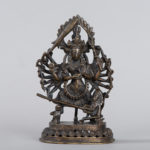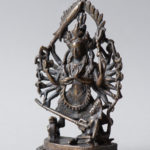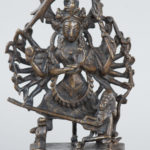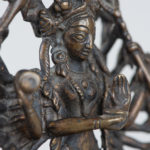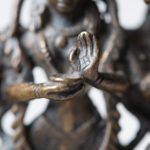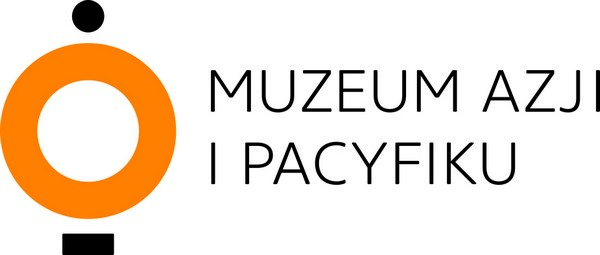Durgā Mahiṣa-sura-mardinī – Durga the Slayer of demon Mahiṣa
There are many versions of the myth describing the causes of the battle between goddess Durgā and demon Mahiṣa. However, the frame-story is the same in each one: Mahiṣa defeated all gods and desired to possess Durgā. The goddess Durgā led a battle against Mahiṣa resulting in defeating the demon.
The word Mahiṣa in Sanskrit denotes buffalo and so is the figure of the demon. When Durgā pierced him with trident the human demon emerged from the buffalo’s body.
Durgā is a warrior goddess, the aspect of Devī (Goddess). She is depicted with her left foot on the defeated demon which emphasises domination, and with her right foot on her mount and helper – lion. She has many various forms which differs in the number of hands, colour of the skin, and attributes. Mahiṣa-sura-mardinī form usually has ten hands but up to twenty are possible.
In the displayed sculpture the front left hand of Durgā is in the gesture of fearlessness and in the seventeen others she keeps typical attributes: vessel, javelin, trident, elephant-driver’s hook, arrow, noose, discus, sword, conch, pestle, and snake-noose.
India
2nd half of the 20th c.
brass cast
DEP 1335

![grafika z tekstem [journeys to the east]](https://www.muzeumazji.pl/maip/uploads/2022/08/baner_strona_english_tn-1140x220.jpg)


